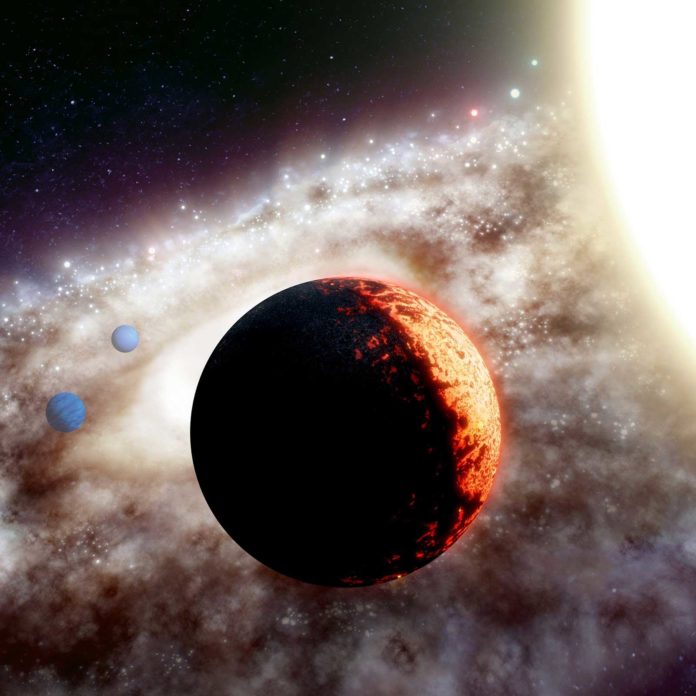A planet that is about 50 percent larger than Earth, dubbed ‘Super-Earth’ or TOI-561b, discovered near one of our galaxy’s oldest stars. This newly discovered Super-Earth takes less than half a day to orbit its star.
The short orbit period is because of the planet’s proximity to its star, which also creates incredible heat. Meanwhile, for every day you’re on Earth, this hot planet orbits its star twice.
The average temperature of this hot planet is over 2,000 degrees, Kelvin. It has roughly three times the mass of Earth and has a density similar to our home planet Earth.
Stephen Kane, UC Riverside planetary astrophysicist, said, “This is surprising because you’d expect the density to be higher. This is consistent with the notion that the planet is extremely old.”
“The older a planet is, the less dense it’s likely to be because not as many heavy elements were available when it formed. Fusion reactions in stars produce heavy elements as they age. Eventually, stars explode, dispersing these elements from which new stars and planets will form.”
University of Hawaii postdoctoral fellow and team lead Lauren Weiss said, “TOI-561b is one of the oldest rocky planets yet discovered. Its existence shows that the universe had been forming rocky planets almost since its inception 14 billion years ago.”
The planet belongs to a rare population of stars called the galactic thick disk. Stars in this region are chemically distinct, with fewer heavy elements such as iron or magnesium associated with planet building.
The TESS Mission team used the University of California’s access to the W.M. Keck Observatory in Hawaii — home to some of the most scientifically productive telescopes on Earth — to confirm the presence of planet TOI-561b.
Kane said, “Information about a planet’s interior gives us a sense of whether the surface of the planet is habitable by life as we know it. Though this particular planet is unlikely to be inhabited today, it may be a harbinger of many rocky worlds yet to be discovered around our galaxy’s oldest stars.”
Journal Reference:
- Weiss, Lauren M., et al. The TESS-Keck Survey II: An Ultra-Short Period Rocky Planet and its Siblings Transiting the Galactic Thick-Disk Star TOI-561. arXiv:2009.03071
